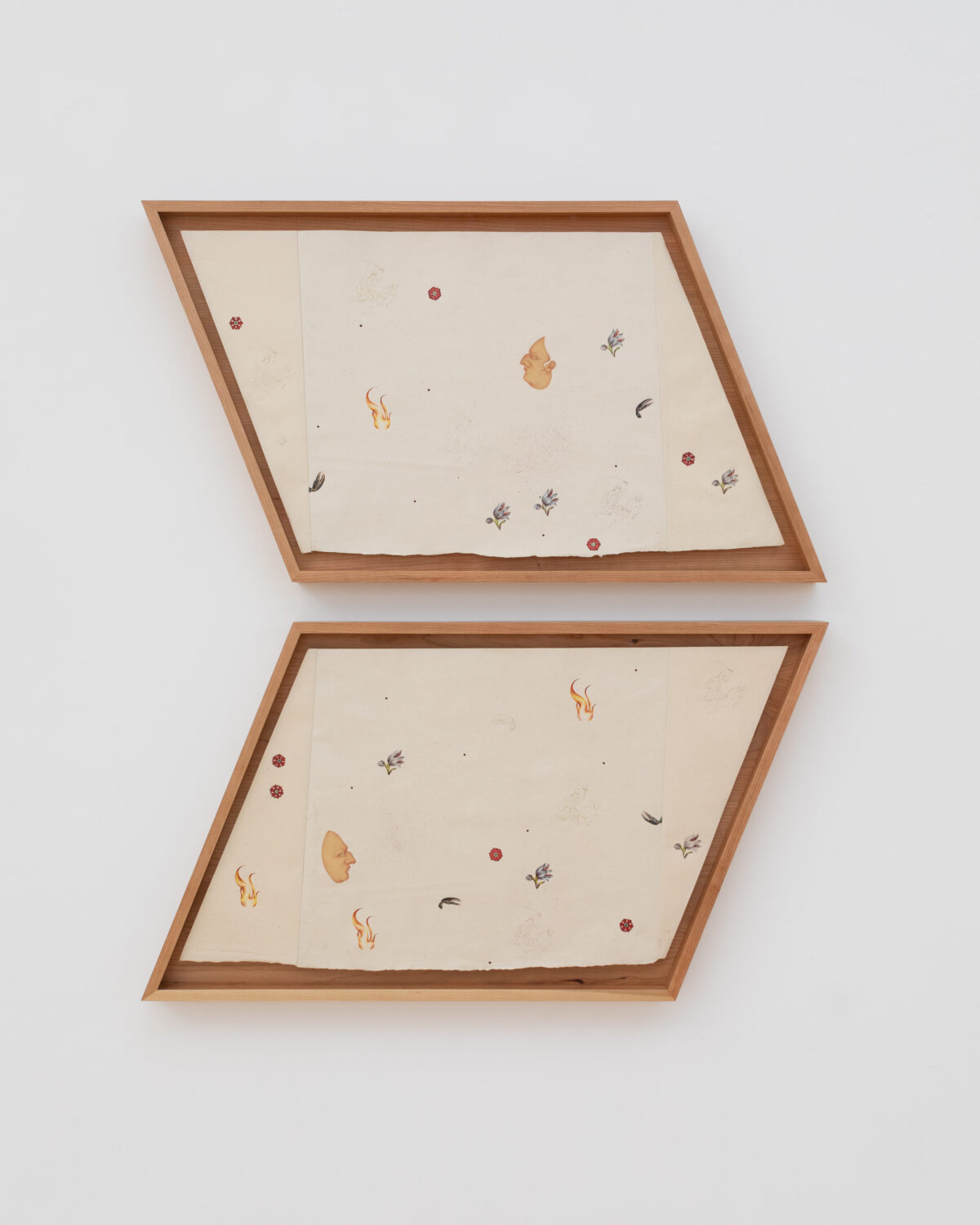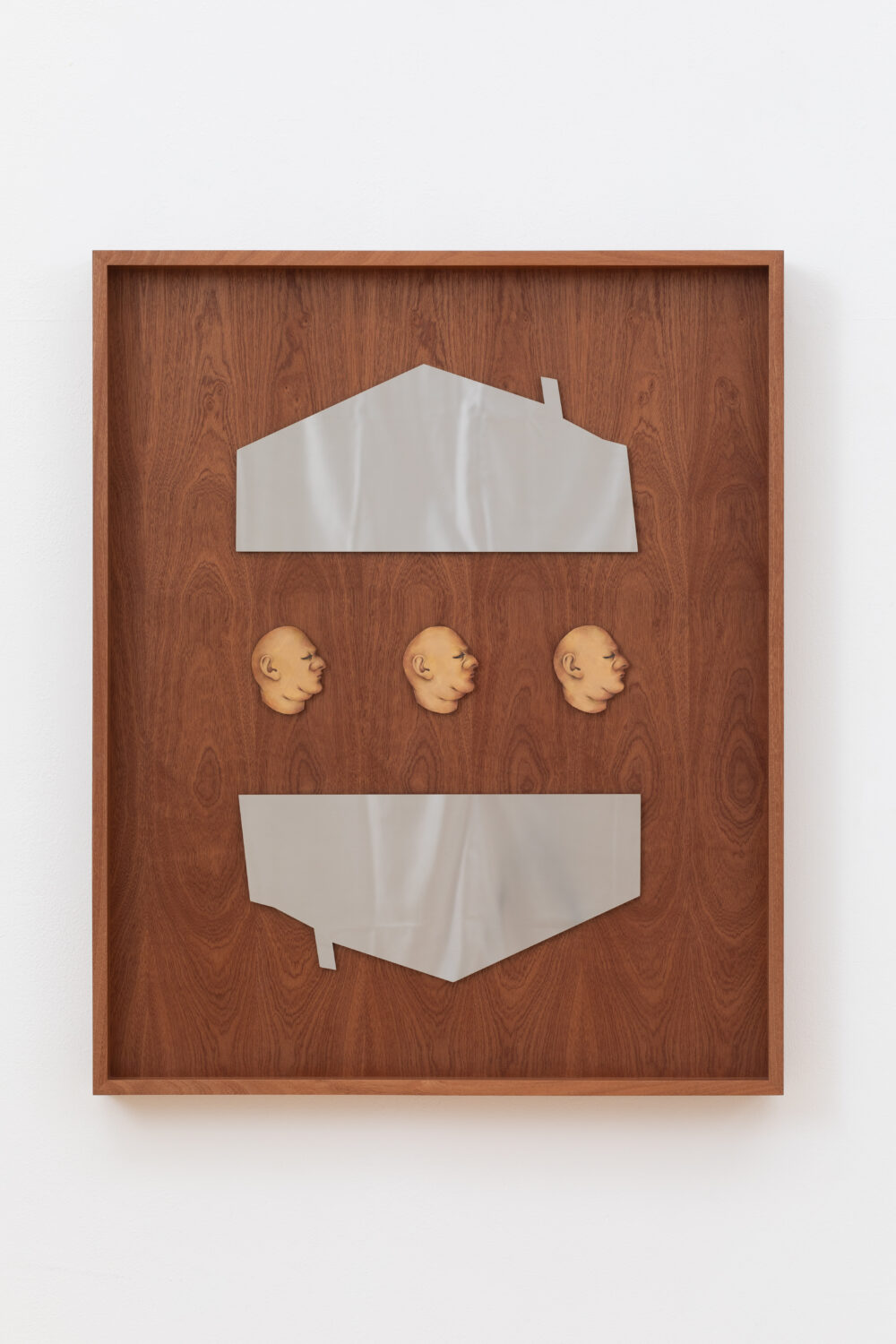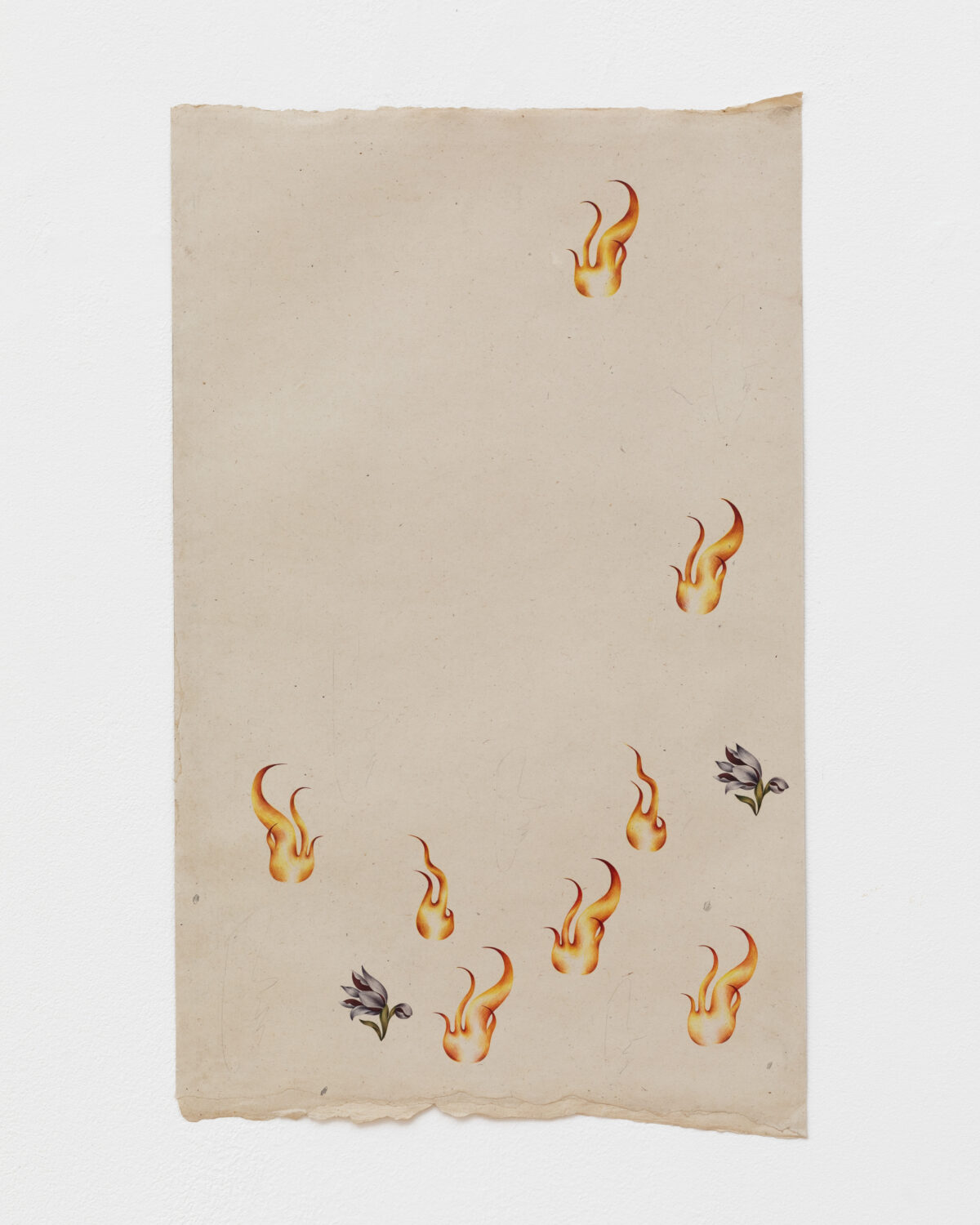Deconstructing the Persian Miniature with Laila Tara H
By Keshav AnandLaila Tara H deconstructs the aesthetic framework of the Persian miniature tradition, hybridising historical painting methods with radically contemporary compositions and ideas. Her works interrogate the quiet politics of the domestic sphere and the tension that exists between the personal and public realm. Drawing from her Iranian heritage and peripatetic upbringing, her paintings manage to resonate universally.
Cooke Latham Gallery in London presents a solo exhibition of new works by the Iranian-British artist, now open and on view until 19 July 2024. Exquisite lobster claws, conjoined faces, carnations and poppies build on the visual lexicon she has developed over the past years; each repeated motif imbued with its own meaning, an alphabet of domestic comfort and claustrophobia, of luxury and death.
Sprawling in scale, comprising multiple parts and incorporating sculptural elements, Tara H’s practice challenges our traditional perception of what constitutes a work on paper. To learn more about her practice and the new show, Keshav Anand spoke with the artist.

Keshav Anand: Tell us about your new exhibition at Cooke Latham Gallery — what is the thinking behind the works included in this show?
Laila Tara H: Everything might be in absolute tatters, surroundings aflame and in total disarray. The morning alarm still goes off, the dishes get washed, the sofa stays dented and the flowers watered.
sleep awake task check task check retreat task check sleep
The exhibition is about the certitude of individual life as the frenzied external plays out. It presents a route of sorts where sameness of material carry through — wood and steel, domestic and industrial. A pair wake, leave the home, are surveilled, enter a zone of clashing introspection, they garden, they march, they retreat. The cycle repeats. It is set in no specific place but accompanied by a book, published by Oscar Piccolo, that sets mini contexts from personal history. The title of the show, 2002, is based on a memory, the first memory in which I understood this version of duality.

Excerpt from the book:
London 2002
6 or 7 years old. We have just left India, a happy place to be little. Mum and I are now in a 2 bed flat on the junction of hoop lane. We have sublet one room. Dad is in Afghanistan, a non-family duty station. He is building schools for girls. Tents, to be precise. They are pulled down every other day by the Taliban. I wear a uniform for the first time, and am taken to an all girls catholic school. Brick building, St. Margarets. Assembly each morning, followed by prayer, and a rigid schedule of classes. We must rise when the teacher enters the classroom, we read aloud to practice dictation and I sit at the back of the mathematics class. The other students are collected in their mother’s Porsches, glamorous blondes with red lips, standing high in cork wedges. We are parked 2 blocks down in our aged grey Peugeot. She collects me, we giggle through our drive, we go home. She is the best laugh. She has bought me new pencils and I sit at the kitchen table while she washes the dishes. Dad calls. He’s in the bunker, there is bombing above. He has started running, his survival is on the treadmill. I am a child so I call him a chicken, why is he in the bunker? The chaos is above ground. We play duck duck goose on the asphalt in the playground, it is still asphalt today.

KA: What interests you in deconstructing the aesthetic framework of the Persian miniature?
LTH: The Persian miniature tradition acts as a primary material reference, the language in which I am painting. The deconstruction of this is inevitable as I’m working outside of the standard parameters of its original form. Originally, the form relied on primarily royal patronage — manuscripts full to the brim with painted scenes, densely packed together and only separated by script. Here the paintings are pulled apart, scantily placed. What binds the tradition to my work, outside of material, is a loyalty of lack of depth and perspective. The specificity of reality is inessential.
KA: I’m curious to learn more about the materials you work with, in particular the natural pigments, and what draws you to them.
LTH: The miniature tradition is largely defined by its pigments, ground purified earth, rock, and plant. It’s nothing particularly groundbreaking to be using natural pigment, but it is essential when tying oneself to a historical form. It shifts the way the colour sits on the paper, whether Lapis or London brick.

KA: What are your favourite restaurants in London?
LTH: 40 Maltby St! Kiln! Sabor! Berenjak! Perilla!
KA: And what are you currently reading?
LTH: Juggling a few at the moment: Aria Dean, Bad Infinity; Orhan Pamuk, My Name is Red (third time reading it, first time finishing it); and Mathilde Supe, Keren Cytter Does Not Like to Share.
Feature image: Laila Tara H, leftovers ii, 2024. Photography by Ben Deakin. Courtesy the artist and Cooke Latham Gallery